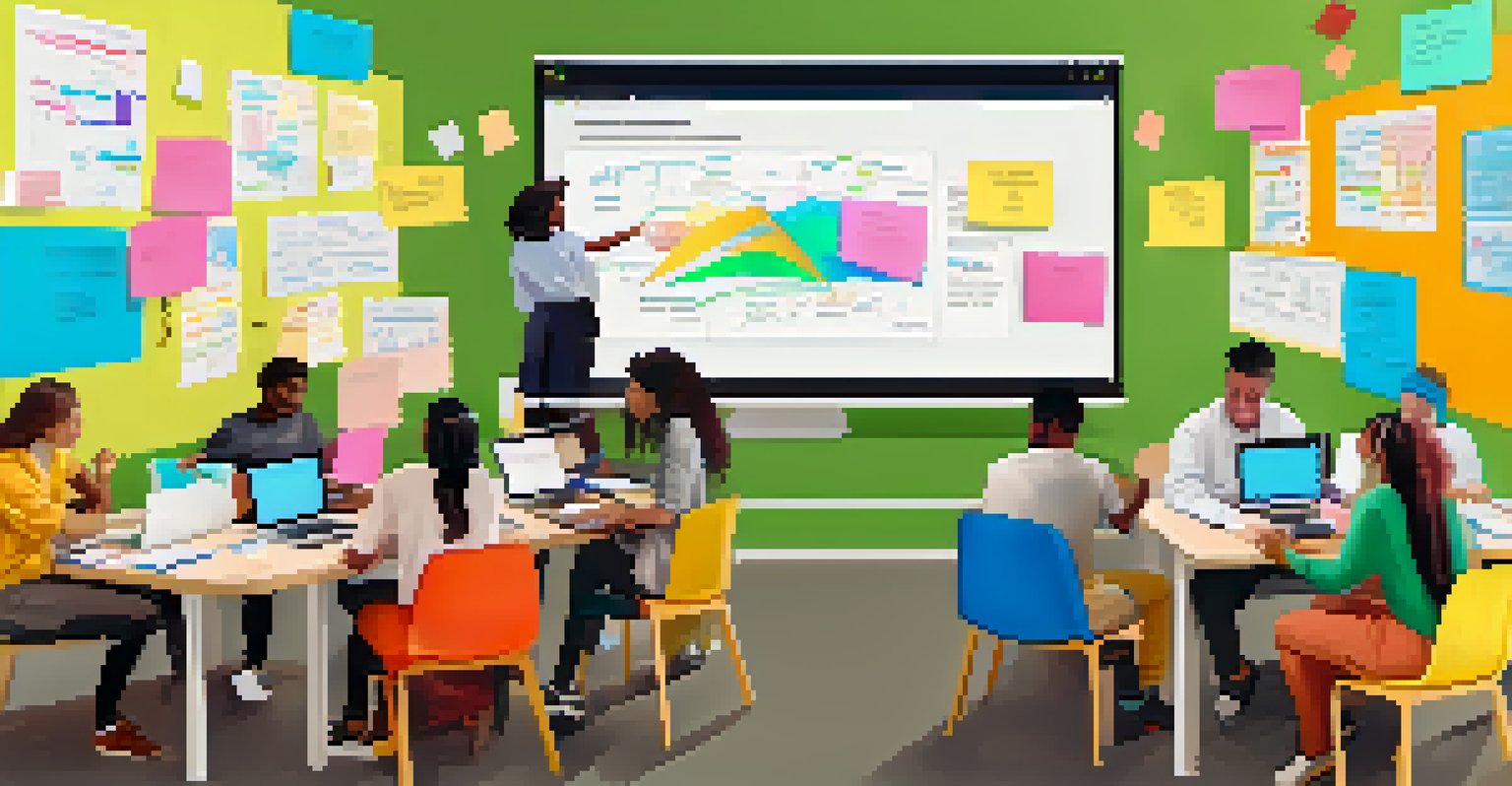Challenges Faced by Online Learning Communities Today

The Rise of Disengagement in Online Learning Spaces
A common challenge in online learning communities is student disengagement. With the convenience of online platforms, learners can easily drift away without the physical presence of a classroom. This disengagement can manifest as missed assignments or lack of participation in discussions, leading to a disconnected learning experience.
Education is the most powerful weapon which you can use to change the world.
Moreover, the lack of face-to-face interaction can make it difficult for students to form meaningful connections with their peers and instructors. Without these connections, motivation can dwindle, and students may feel isolated in their learning journey. This poses a significant barrier to building a supportive community.
To combat this, educators and facilitators are exploring innovative strategies, such as incorporating interactive elements and regular check-ins, to foster engagement. By prioritizing community-building activities, online learning communities can create an environment where learners feel valued and connected.
Technological Barriers Impacting Learning Experiences
Technology is a double-edged sword in online learning; while it provides incredible resources, it can also create barriers. Many learners struggle with unreliable internet connections or lack access to the necessary devices, which hinders their ability to participate fully. This digital divide can lead to disparities in learning outcomes among students.

Additionally, the rapid pace of technological advancements can leave both students and educators feeling overwhelmed. Learning new platforms or tools often requires additional training and support, which may not always be available. As a result, frustration can set in, reducing overall satisfaction with the learning experience.
To address these challenges, institutions need to invest in providing adequate technological support and resources. By ensuring all learners have access to the tools they need, online learning communities can work toward creating a more equitable educational landscape.
Maintaining Quality of Content and Curriculum
One significant challenge online learning communities face is maintaining the quality of content and curriculum. With the influx of courses available on various platforms, it can be difficult for students to discern which offerings are credible and valuable. This saturation of content can lead to confusion and indecision among learners.
The beautiful thing about learning is that no one can take it away from you.
Moreover, instructors may struggle with keeping their course materials updated and relevant. The fast-paced nature of knowledge creation means that what was once cutting-edge can quickly become outdated, potentially compromising the learning experience. Learners deserve access to current and high-quality information.
To ensure quality, online communities must prioritize regular curriculum audits and encourage feedback from participants. By doing so, they can adapt to the evolving educational landscape and provide learners with the best possible resources.
Building a Sense of Community in Virtual Environments
Creating a sense of community is often more challenging in an online setting than in traditional classrooms. The absence of physical proximity can lead to feelings of alienation among students, making it difficult for them to engage fully with their peers. This lack of community can impact motivation and hinder collaborative learning experiences.
Effective community-building strategies, such as icebreakers and group projects, can help bridge this gap. However, facilitators must be intentional about fostering an inclusive atmosphere where everyone feels welcome to share and participate. This requires ongoing effort and creativity from educators.
By prioritizing community engagement, online learning environments can transform into vibrant spaces where learners thrive. Encouraging peer-to-peer interaction and collaboration can create a supportive network that enhances the overall educational experience.
Navigating the Challenges of Assessment and Evaluation
Assessing student progress and understanding in online learning poses unique challenges. Traditional assessment methods may not translate well to a digital format, leading educators to explore alternative evaluation strategies. This shift can create uncertainties about how to best gauge student performance and learning outcomes.
Additionally, concerns about academic integrity can arise in online assessments. With the ease of access to information, instructors may worry about plagiarism or cheating, which complicates the evaluation process. Ensuring that assessments are fair and reflective of true understanding is crucial.
To address these issues, online learning communities can implement diverse assessment methods, such as project-based evaluations and peer reviews. By diversifying assessment strategies, educators can gain a more comprehensive view of student progress while fostering a culture of accountability.
Adapting to Diverse Learning Styles and Needs
In any learning environment, recognizing and accommodating diverse learning styles is critical. In online communities, this challenge can become even more pronounced, as students come from various backgrounds and possess unique ways of processing information. Failing to address these differences can lead to disengagement and frustration.
Educators must strive to create inclusive content that appeals to a wide range of learning preferences. This might involve incorporating multimedia resources, interactive activities, and varied assessment methods to cater to different needs. Flexibility in teaching approaches can significantly enhance the learning experience for all students.
By embracing diversity in learning styles, online communities can create a more enriching educational environment. This inclusivity not only benefits individual learners but also fosters collaboration and mutual respect among peers.
Overcoming Isolation in a Virtual Learning Landscape
Isolation is a common experience for many online learners, often stemming from the lack of physical interaction with peers and instructors. This sense of loneliness can impede motivation and satisfaction, ultimately affecting the learning process. Finding ways to connect students within the virtual space is essential for their success.
Encouraging regular communication through forums, video calls, and group projects can help mitigate feelings of isolation. Establishing mentor-mentee relationships within the community can also create a sense of belonging and support. Building these connections is vital to fostering a collaborative and engaging learning environment.

By prioritizing relationship-building, online learning communities can transform isolation into connection. Creating opportunities for interaction not only enhances the learning experience but also cultivates a strong sense of community among participants.